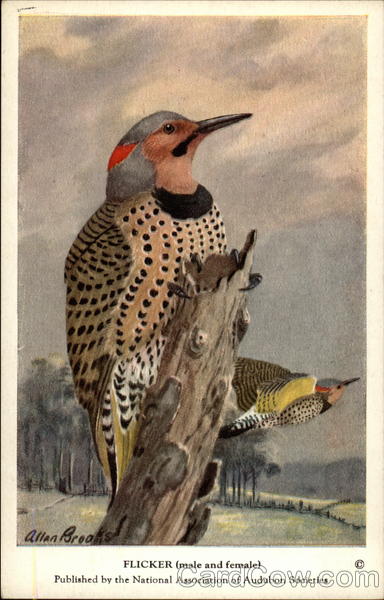Front:
allan Broa
FLICKER (male and female)
Published by the National Association of Audubon Societies
Back:
No. 19 Flicker
Length 12 inches
The Flicker is the largest of our common
Woodpeckers and is generally recognized by even
those who make no pretensions to be students of
birds. It is, doubtless, best known throughout
most of its range as Yellowhammer, although it
is called many other names, among which are
Golden-winged Woodpecker and Highholder?
The Flicker is perhaps the most interesting 9804
resourceful of all our Woodpeckers and hals come
to be more intimately associated with pan's life
than most of the others. Unlike its relatives, it is,
to quite an extent, a ground-feeding bird and may
be seen hopping about lawns, and orchards, in
company with Robins and Grackles, searching for
esting and entertain IEMINGTS
the ants which make up large portion of its
food.
Few examples of -behavior are more inter-
a small group of these birds during the mating
period in the early spring.
The nest is usually excavated in the semi-soft
wood of some dead tree or snag, although, if
nesting boxes are provided, they are often occu-
pied. From five to nine white eggs are laid.
Classification: Order Pici. Family Picide.
Scientific name: Colaptes auratus.
Range: Eastern North America from tree limit south
to Florida. A sub-species is recognized in Eastern and
Northern North America.
No. 19 from set of 50 Winter Birds of the Northeastern United
States. Published by the National Association of Audubon So-
cieties, 1974 Broadway, New York City. Price per set, in a box,
$1.00 post paid.



